Related Research Articles
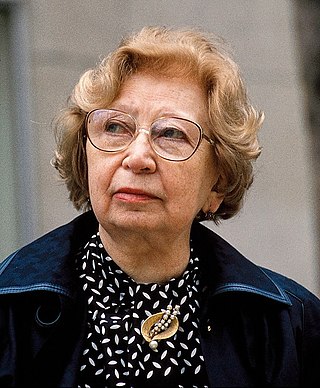
Hermine "Miep" Gies was one of the Dutch citizens who hid Anne Frank, her family and four other Dutch Jews from the Nazis in an annex above Otto Frank's business premises during World War II. She was Austrian by birth, but in 1920, at the age of eleven, she was taken in as a foster child by a Dutch family in Leiden to whom she became very attached. Although she was initially only to stay for six months, this stay was extended to one year because of frail health, after which Gies chose to remain with them, living the rest of her life in the Netherlands.
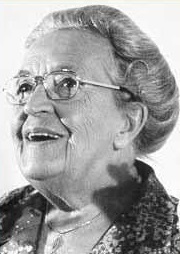
Cornelia Arnolda Johanna "Corrie" ten Boom was a Dutch watchmaker and later a Christian writer and public speaker, who worked with her father, Casper ten Boom, her sister Betsie ten Boom and other family members to help many Jewish people escape from the Nazis during the Holocaust in World War II by hiding them in her home. They were caught, and she was arrested and sent to the Ravensbrück concentration camp. Her most famous book, The Hiding Place, is a biography that recounts the story of her family's efforts and how she found and shared hope in God while she was imprisoned at the concentration camp.

Jannetje Johanna (Jo) Schaft was a Dutch resistance fighter during World War II. She became known as "the girl with the red hair". Her secret name in the resistance movement was "Hannie".

The Dutch resistance to the Nazi occupation of the Netherlands during World War II can be mainly characterized as non-violent. The primary organizers were the Communist Party, churches, and independent groups. Over 300,000 people were hidden from German authorities in the autumn of 1944 by 60,000 to 200,000 illegal landlords and caretakers. These activities were tolerated knowingly by some one million people, including a few individuals among German occupiers and military.

Jewish resistance under Nazi rule took various forms of organized underground activities conducted against German occupation regimes in Europe by Jews during World War II. According to historian Yehuda Bauer, Jewish resistance was defined as actions that were taken against all laws and actions acted by Germans. The term is particularly connected with the Holocaust and includes a multitude of different social responses by those oppressed, as well as both passive and armed resistance conducted by Jews themselves.
The Henneicke Column was a group of Dutch Nazi collaborators working in the investigative division of the Central Bureau for Jewish Emigration, with headquarters in Amsterdam, during the Nazi Germany occupation of the Netherlands in World War II. Between March and October 1943 the group, led by former auto mechanic Wim Henneicke and Willem Briedé, was responsible for tracking down Jews in hiding and arresting them. The group arrested and delivered to the Nazi authorities 8,000-9,000 Jews. Most of them were deported to Westerbork concentration camp and later shipped to and murdered in Sobibor and other German extermination camps.
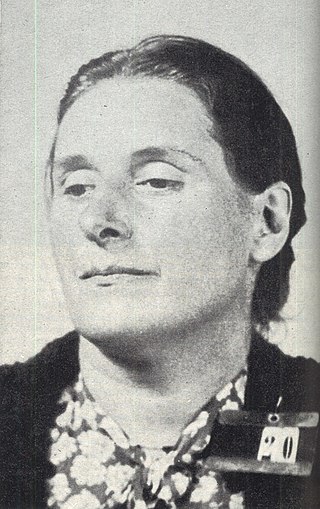
Adrienne Minette (Mies) Boissevain-van Lennep was a Dutch feminist who was active in the Resistance before being arrested by the Nazis and sent to the Herzogenbusch concentration camp. After the war, she promoted the idea of the national liberation skirt, and some of these unusual skirts are now in Dutch museums.

Casper ten Boom was a Dutch Christian who helped many Jews and resisters escape the Nazis during the Holocaust of World War II. He is the father of Betsie and Corrie ten Boom, who also aided the Jews and were sent to Ravensbrück concentration camp, where Betsie died. Casper died 9 March 1944 in The Hague, after nine days of imprisonment in the Scheveningen Prison. In 2008, he was recognised as Righteous Among the Nations by Yad Vashem.
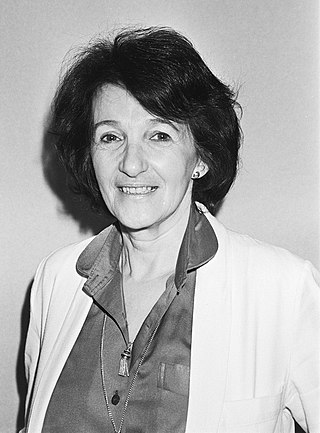
Marga Minco is a Dutch journalist and writer.
The Westerweel Group was a small resistance group with non-Jewish and Jewish members that operated during the Nazi occupation of the Netherlands. Led by a Dutch Christian Joop Westerweel and Jewish German refugee Joachim Simon, the group was initiated in August 1942 and its first objective was to hide a Jewish youth group of "Palestine pioneers" whose members were ordered to be deported to the Nazi Westerbork transit camp. They were Primarily young Jews from Germany and Austria who had fled to the Netherlands after 1933 where they followed an agricultural training to settle in Palestine. When threatened with deportation, the resistance group helped them to find hiding places and some of them were brought to Spain via Belgium and France.
Eva and Abraham Beem were Dutch Jewish siblings and victims of the Holocaust in the Netherlands. They had been given new identities with a Christian family in an attempt to evade deportation by the Nazis, but were discovered and deported to Auschwitz concentration camp. They were murdered in the gas chamber upon their arrival on 6 March 1944.

Anna "Ans" van Dijk was a Dutch collaborator who betrayed Jews to Nazi Germany during World War II. She was the only Dutch woman to be executed for her wartime activities.

Bernardus Andreas "Dries" Riphagen was a Dutch gangster and Nazi collaborator who is best known in the Netherlands for collaborating with the Nazi Sicherheitsdienst (SD) to locate as many Dutch Jews as possible and have them delivered to Nazi concentration camps during the occupation.
Hendrika Jacoba "Kiky" Gerritsen-Heinsius was recognized by Yad Vashem as Righteous Among the Nations on 15 September 1989, and was also awarded the Verzetsherdenkingskruis by the Dutch government.

The 1943 bombing of the Amsterdam civil registry office was an attempt by members of the Dutch resistance to destroy the Amsterdam civil registry (bevolkingsregister), in order to prevent the Nazis from identifying Jews and others marked for persecution, arrest or forced labour. The March 1943 assault was only partially successful, and led to the execution of 12 participants. Nevertheless, the action likely saved many Jews from arrest and deportation to the extermination camps.
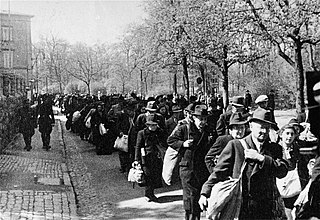
The question of how much Germans knew about the Holocaust while it was ongoing continues to be debated by historians. With regard to Nazi Germany, some historians argue that it was an open secret amongst the population, whilst others highlight a possibility that the German population were genuinely unaware of the Final Solution. Peter Longerich argues that the Holocaust was an "open secret" by early 1943, but some authors place it even earlier. However, after the war, many Germans claimed that they were ignorant of the crimes perpetrated by the Nazi regime, often using the stereotypical phrase "Davon haben wir nichts gewusst".
Sietje Gravendeel-Tammens was a Dutch resistance leader and teacher. In 1944, she was sentenced to death, but survived because the sentence needed approval from Berlin.
Elizabeth Wery was a Dutch Nazi collaborator who is best known in the Netherlands for collaborating with the Nazi Sicherheitsdienst (SD) to locate as many Dutch Jews as possible and have them delivered to Nazi concentration camps during the occupation.

Wim Sanders was a Dutch politician and World War II resistance fighter.

Esmée Adrienne van Eeghen was a Dutch resistance fighter in World War II. Van Eeghen is controversial because she fell in love with a German officer, but in spite of this played a significant role in the resistance, especially in Friesland, a role that would ultimately be fatal for her, due to her turbulent love life. The character Rachel Stein from the 2006 film Black Book was based on the life of van Eeghen.
References
- ↑ "Riphagen: The Untouchable". Atlanta Jewish Film Festival. Retrieved 27 July 2018.
- ↑ "Riphagen". Nederlands Film Festival . Retrieved 27 July 2018.